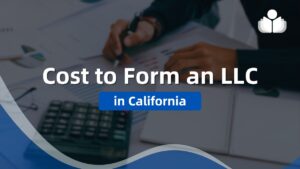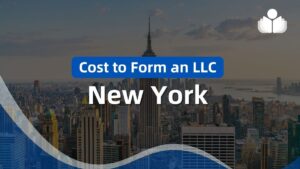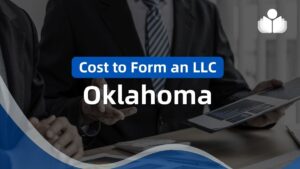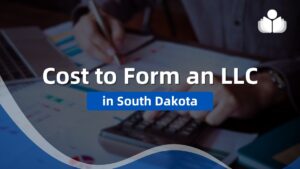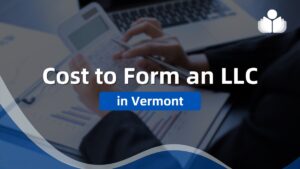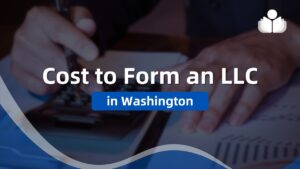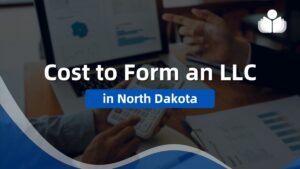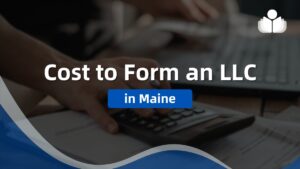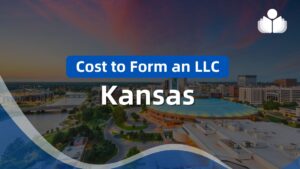© Copyright Carter McNamara, MBA, PhD, Authenticity Consulting, LLC.
This topic is about the group-based, Action Learning process in which members work together in a group (a “set”) on real-world priorities (called a “problem” by many practitioners) primarily by sharing questions and taking actions between meetings. Members learn from the reflection during and between meetings, especially regarding the actions they took to address real-world priorities. The process was founded by Professor Reginald Revans and is now widely used around the world for professional and organizational development. If you need help with Action Learning, consider Action Learning Source.
(The Library provides a complete, online, free training program about Action Learning. Each video provides guidelines about each of the most important aspects of Action Learning. See the free video series, Action Learning Process, and Programs.)
Sections of this Topic Include
Understanding Action Learning
- What is Action Learning?
- Some Theories Underlying Action Learning
- Some Different Models and Approaches of Action Learning
- Numerous Examples of Applications of Action Learning
- There Is No Independent Certifying Body for Action Learning — Should There Be?
Action Learning Components and Programs
Context of Action Learning Programs — Learning, Development, and “Problem Solving”
- Other Methods of Reflection and Learning
- Understanding Learning and Development
- Many Forms of Development
- Practitioners in Learning and Development
Related Resources and Topics
Learn More in the Library’s Blogs Related to Action Learning
In addition to the articles on this current page, also see the following blogs that have posts related to Action Learning. Scan down the blog’s page to see various posts. Also, see the section “Recent Blog Posts” in the sidebar of the blog or click on “Next” near the bottom of a post in the blog. The blog also links to numerous free related resources.
- Library’s Career Management Blog
- Library’s Human Resources Blog
- Library’s Leadership Blog
- Library’s Supervision Blog
- Library’s Training and Development Blog
Have a Question, Suggestion, or Resource About Action Learning?
- Post it in the Library’s LinkedIn group
Action Learning and Coaching For Everyone
Understanding Action Learning
What is Action Learning?
Remember — Action Learning is a Framework Within Which There Can Be Variations
It’s important to note, when reviewing the information on this topic, that the Action Learning process is a framework within which there can be variations, including where:
- All members are from the same organization (an intact team) and work on the same priority.
- All members are from the same organization and each member might work on a different priority different from other members.
- All members are from different departments or organizations and work on the same priority.
- All members are from different departments or organizations and each member works on a priority different from other members.
- In these combinations, the priorities might be very familiar or unfamiliar to the members.
- Sets can be externally facilitated or self-facilitated.
- Members might meet face-to-face or via telecommunications.
Practitioners often tend to favor one of the variations and refer to that as “Action Learning.” However, the reader will benefit most from continuing to remember the possible variations of the overall Action Learning framework.
Basic Descriptions of the Process
The following links are concise descriptions of the concept of Action Learning. The links in the next section are to more complete descriptions of the Action Learning process.
Free Video Series
- Why Use Action Learning Now? (21 minutes)
- Action Learning Process (15 minutes)
- Examples of Action Learning Program and Meeting Formats (13 minutes)
- Different Perspectives on Action Learning (12 minutes)
- Typical Results From Action Learning (13 minutes)
- Suggested Enhancements to Action Learning (13 minutes)
Other Descriptions of Action Learning
- Action Learning (Wikipedia)
- Action Learning in Brief
- What is Action Learning? How Does Action Learning Work?
- What’s Action Learning?
- Strategies for Integrating Learning and Work
Overviews of Process and Program Components
The following links are to resources that describe Action Learning, and most of them mention the key components of Action Learning. Keep in mind that, although some of the following resources might
elaborate on a particular variation of Action Learning, there are many variations, as mentioned above.
The following links are to resources that will give you a very good impression of considerations in designing and operating Action Learning programs.
- Action Learning in a Nutshell Understanding Action Learning
- Action Learning
- Action Learning (Revans)
- Action Learning and Group Coaching
- Action Learning
- Using Action Learning
- Action Learning
- FAQ on Action Learning
- Action Learning
- Interviews With Set Members
Some Theories Underlying Action Learning
The Action Learning framework touches on so many aspects of personal, professional, and organizational development, that a list of related theories would produce a very extensive list. The following resources capture the unique theories, especially behind the “P”s and “Q”s of Revans’ core theory behind Action Learning.
- Q’ing Action Learning: — More on Minding Our Ps and Qs. (balancing programmed knowledge and questioning insight in action learning) Mapping Group Dynamics in an Action Learning Experience (examination of group dynamics in Action Learning)
- Action Learning and Action Research (a comparison)
- Action Learning — Some Related Theories
Some Different Models and Approaches of Action Learning
The Action Learning framework also is so general in nature that numerous variations and refinements have been done, and many of them have general or commercial names. I apologize in advance if I have somehow mischaracterized a particular model or approach below. In some cases, I listed the home page of the organization so the reader can explore the site’s information about Action Learning. (Similar to other fields and practices, it’s natural for proponents of a particular model or approaches to refer to it as “the” model 🙂
- Action Learning (Reginald Revans)
- Models, Definitions, and Outcome Variable of Action Learning
- LIM ActionReflectionLearning Academy
- Action Learning International
- Solutions Leadership Consulting
- Action Learning Associates
- Action Learning Question (ALQ)
- Action Learning Source (an approach to Action Learning)
- World Institute for Action Learning (WIAL)
To enhance your understanding of different perspectives on Action Learning, we encourage you to see the 12-minute video Different Perspectives on Action Learning
At least two of the above organizations assert that they are “the certifying body for Action Learning”; however, there is no organization that has wide consensus as being that body.
Numerous Examples of Applications of Action Learning
The following long list is to give the reader a strong impression of the varied applications of the Action Learning framework. Also, for the reader who is considering developing an Action Learning program the following stories will be useful in conveying the most important considerations and components to address.
- Action Learning and Its Applications (An Overview)
- The Action Learning Model for New Starter Management Training
- Strategic Planning as Action Learning
- MILE Action Learning Sets (gathering ethnic minorities)
- Enriching Learning Cultures Through Action Learning
- Experiences from using Action Learning Groups to develop Sustainable Farming Systems for Central Queensland
- Los Angeles County Action Learning Collaborative
- Reflected Action Learning – a Method for Collective
- Competence Development
- Action Learning Case Study– Telecom Service
- Approaches to Action Learning in Technical and Vocational Training
- Systems Thinking, Lead Production, and Action Learning (using these to improve customer service)
- Designing Your Action Learning Pathway (designing Action Learning curriculum)
- Studying Human-Centered IT Innovation Using A Grounded Action Learning Approach (Action Learning in Virtual Teams)
- Can Entrepreneurship Be Taught in an Action Learning Format?
Action Learning Components and Programs
Projects (Problems or Exciting Opportunities)
The problem is the real-world priority that the Action Learning group (set) addresses. (Although the term “problem” is traditional to Action Learning literature, many practitioners might prefer to use the more appreciative term “priority.”) The problem should be a current, real, and urgent priority for the individual, team, program, or organization to address. Usually, there is no straightforward “solution” to the problem,
and the more urgent the problem, the more likely it will generate useful and deep learning for the stakeholders (those who have a direct or indirect interest in the problem). The group is charged to clarify the problem, identify solutions, identify the most likely solutions, take actions to implement the solutions — and generating learning along the way. In single-project Action Learning, all members of the set work on the same problem. In multi-project Action Learning, each member brings his/her own problem to address.
In single-project Action Learning, the problem should be closely aligned with the priorities of the organization. Those priorities might be the result of strategic or business planning, or the result of an organizational assessment. Similarly, the problem might be the result of assessments among individuals.
- Projects That People Work on in Action Learning (video 9 minutes)
Also, consider
- Business Planning
- Assessments (Organizational)
- Assessments (Personal)
- Assessments (Teams)
- Strategic Planning
Group (Set)
The set is the group of people, usually six to eight, charged to address the problem. The membership of the group depends on the problem. In a single-project application, the member would likely be from the same business unit, working on the same projects or priorities. However, the more diverse the values, opinions, and perspectives of the members, the more unbiased, probing, and generative might be the questions shared among members — and, thus, the more learning generated among members.
In single-company Action Learning, all members are from the same company, and sometimes they work on the same business function or project (they are an intact team). In multi-company (or multi-department) Action Learning, each member is from a different company or department.
- Membership and Groups in Action Learning (video 13 minutes)
Also, consider
Coaching (Sharing Thoughtful Questions)
A hallmark of the Action Learning process is the use of questions among members. In contrast to most problem-solving groups, where members start advocating their own opinions and advice, Action Learning members share questions — questions to analyze, understand, and solve problems. Questions generate deep thinking and reflection about the problem. They ensure each person is highly involved in — and aware of — his/her own perceptions, assumptions, and conclusions about the problem. Thus, each person more fully “learns how to learn,” that is, accomplishes continuous learning.
One of the most important roles of the question is to clarify the real problem, rather than the symptoms. Many times, it’s more important to understand the real problem than to start suggesting various solutions that might solve it. Questions make each person accountable to be involved and, thus, they often generate more authenticity and involvement among members — authenticity is a critical element to any form of development.
Depending on the model of Action Learning, members might only interact via questions and statements might only be made in response to questions.
- Coaching and Questions in Action Learning (video 18 minutes)
- Role of Questions in Action Learning
Also, consider
- Appreciative Inquiry
- Awareness
- Continuous Learning
- Inquiry and Advocacy
- Inquiry and Reflection
- Mental Models (scan down to “Mental Models”)
- Questioning
- Reframing
- Systems Thinking
Actions
Another hallmark of Action Learning is that set members take action to address the problem. (Some recent literature about Action Learning does not assert the need for actions among members. This “Americanized” Action Learning is not likely to generate the type of progress and learning so familiar to the more “European” Action Learning where set members are charged to take actions between meetings.
The actions, not only “attack” the problem, but they generate experiences from which set members learn a great deal by reflecting on what they did, what happened, what worked and what didn’t, and how they can take that learning forward in life and work. A major value of the questioning is that it ensures that the
actions are relevant and realistic, which is particularly important for very busy people in the workplace.
Actions for Progress and Learning in Action Learning (video 11 minutes)
Also, consider
Learning
Learning, in Action Learning, comes especially from members’ reflection on the nature of the questions and answers among members, and also from the nature and results of the actions taken between meetings. The learning is not from analyzing and memorizing expert-based content brought to the group by outside experts (although, the “Americanized” Action Learning does tend to bring in more outside experts than the European version). Reginald Revans, the founder and original developer of Action Learning, often asserted that this kind of “programmed,” or expert-based, learning did not generate the ability to learn how to learn and, thus, should be minimized as much as possible.
One of the early tasks of an Action Learning program is to orient set members to the nature of learning, that it is not always the result of listening to experts, memorizing their content, and getting a good grade. Members are reminded that some of the most important learning in their lives is from experiencing and thinking about significant events, people, and experiences in their lives. Another task is to help members recognize learning when it happens — that’s one of the major roles of the Action Learning coach.
- Capturing and Spreading Learning in Action Learning (video 10 minutes)
Also, consider
- Appreciative Inquiry
- Awareness
- Continuous Learning
- Group Learning
- Inquiry and Advocacy
- Inquiry and Reflection
- Mental Models (scan down to “Mental Models”)
- Reframing
- Systems Thinking
- Understanding Learning and Development
Facilitation of Meetings and Learnings
(It’s ironic to realize that the founder of Action Learning, Reginald Revans, did not want Action Learning to be “packaged” into seemingly inaccessible models or that the role of “facilitator” become professionalized such that the Action Learning process seemed too complex for those who are not professionals in the process. Yet, with the increasing importance and popularity of Action Learning and its focus on urgent problems, people are often more assured when using a highly trained external facilitator and they often end up using the particular model of Action Learning suggested by the facilitator.)
Note that many practitioners might prefer this position as the “facilitator” and to the members as being “coaches.” In a self-facilitated set, the members are the coaches.
The primary role of the Coach is to orient members to the Action Learning process and the nature of learning in Action Learning. The coach might initially work with the person, or sponsor, of the Action Learning project to clarify the problem, resources, timelines, and membership of the sets. The coach should help the set to establish ground rules, learn skills in presenting and listening and questioning, and recognizing learning. The Coach might intervene at various times to affirm a strong occasion of learning or affirm learning for a member of the set. Depending on the model of Action Learning, the Coach might be the only one to do that type of intervention.
- Facilitation in Action Learning Groups (video 20 minutes)
- Role of Action Learning Facilitator
- Action Learning — the Coach’s Role
- A Guide To Coaching & Being Coached
Also, consider
Designing and Developing Action Learning Programs
Each Action Learning application should be customized to the needs and nature of the person, group, or organization. The program designer should first know the basic Action Learning framework, which he/she can glean by reviewing the resources in Brief Description, some of those at Overviews of Process and Program Components, and each of the six components described above. The following resources provide complete guidelines, but they are guidelines — any detailed “procedure” would be highly unique to the particular program. Perhaps, in the nature of actions and learning, the program designer should start a program, learn from those actions, and then modify the program accordingly.
- Approaches to Developing Action Learning Programs (video 13 minutes)
- Choosing Projects in Action Learning Programs (video 12 minutes)
- Designing an Action Learning Program (video 13 minutes)
- Developing Resources for an Action Learning Program (video 13 minutes)
- Training Others About Action Learning (video 10 minutes)
- How to Design Action Learning to Enrich One-Shot Training
- Also consider:
Program Management
Implementing and Evaluating Action Learning Programs
- Administering Action Learning Programs (video 11 minutes)
- Evaluating Action Learning Programs (video 18 minutes)
- Troubleshooting Action Learning Programs (video 12 minutes)
- An Evaluation of an Action Learning Program
- Measuring Action Learning Projects in Public Sector Leadership Development
- Basic Guidelines for Evaluating Action Learning and Coaching Groups
Also, consider
Evaluations (all kinds)
Context of Action Learning Programs
Other Methods of Reflection and Learning
- Appreciative Inquiry
- Awareness
- Coaching
- Continuous Learning
- Inquiry and Advocacy
- Inquiry and Reflection
- Mental Models (scan down to “Mental Models”)
- Questioning
- Reframing
- Systems Thinking
Understanding Learning and Development
- Basic Terms and Learning and Development
- Informal vs. Formal Training and Development
- Typical Ways of Learning
- All About Training and Development (Learning and Development)
Many Forms of Development
- Guidelines, Methods, and Resources for Organizational Change Agents
- Board Development
- Leadership Development
- Management Development
- Supervisorial Development
- Team Development
- Personal Development
- Sales Training
Practitioners in Learning and Development
- Coaches
- Facilitators
- Human Performance Technologists
- Human Resource Specialists
- An Overview of the Field Organization Development
- Popular Education for Learning and Development and Social Change
- Performance Consultants
- Trainers (Corporate Trainers) (includes guidelines about training)
Related Resources and Topics
Related Library Topics
- Committees
- Communities of Practice
- Conflict Management
- Dialoguing
- Facilitating in Face-to-Face Groups
- Focus Groups
- Group Dynamics (about the nature of groups, stages of group development, etc)
- Group Learning
- Group-Based Problem Solving and Decision Making
- Group Performance Management
- Knowledge Management
- Learning Organization
- Meeting Management
- Open Space Technology
- Self-Directed and Self-Managed Work Teams
- Team Building
- Virtual Teams
General Resources and Organizations
Organizations
- International Foundation for Action Learning
- Global Action Research Center
- Revans University
- World Institute for Action Learning
Bibliographies About Action Learning
- A Review of Action Learning Literature 1994-2000
- Action Learning Bibliography
- Resources for Coaching and Action Learning Programs
Go to the main Training and Development page.
For the Category of Training and Development:
To round out your knowledge of this Library topic, you may want to review some related topics, available from the link below. Each of the related topics includes free, online resources.
Also, scan the Recommended Books listed below. They have been selected for their relevance and highly practical nature.
 Sections of this topic
Sections of this topic


